Home » Hunting Dogs » Women in American Field Trials: Paving the Way
Women in American Field Trials: Paving the Way
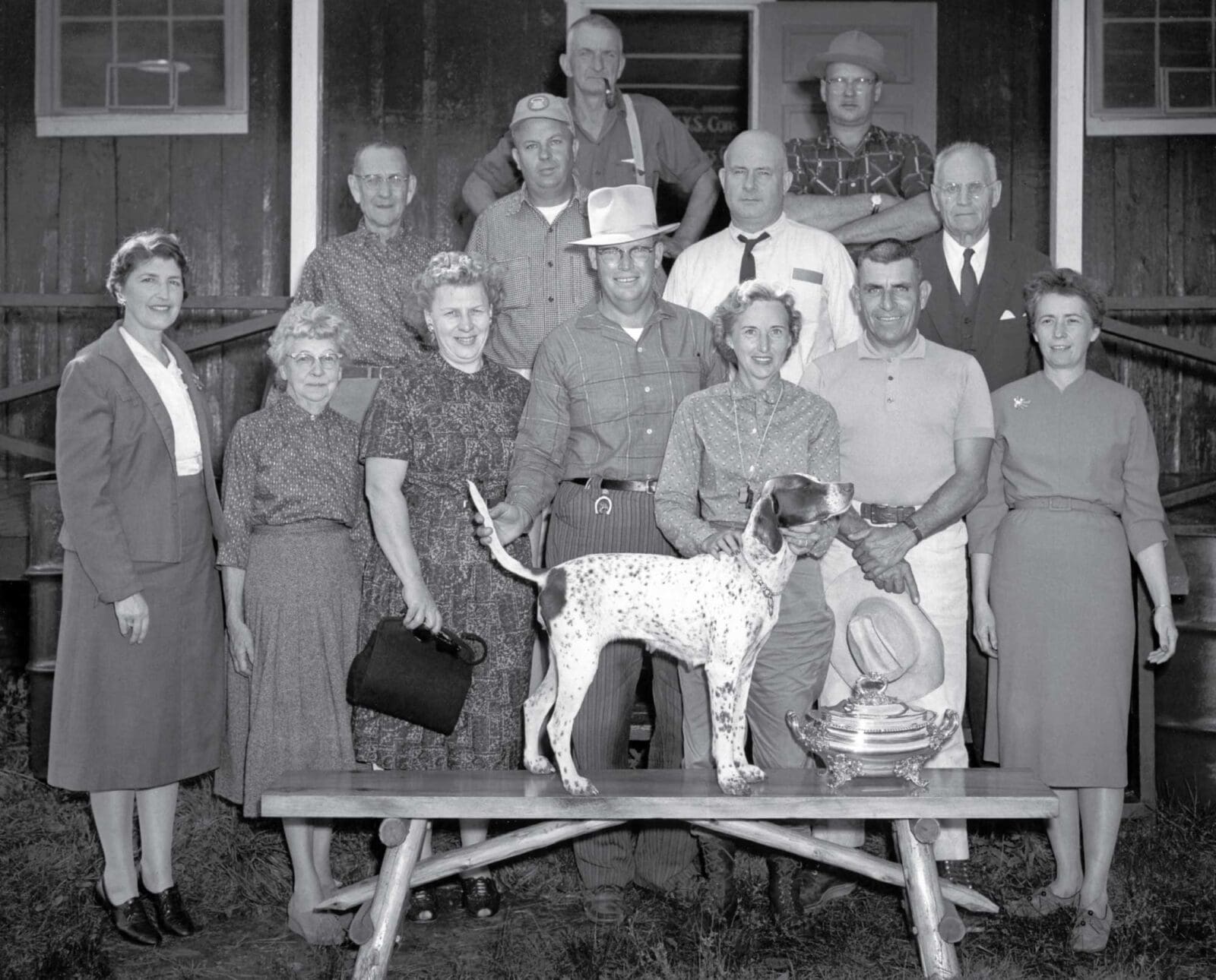
Chris Mathan is an outdoor photographer, graphic/website designer, marketing specialist,…
A remarkable cast of women paved the way through history pointing dog field trials and continue to lead the growth into the future.
American Field-sanctioned trials, for dogs registered with the Field Dog Stud Book, date back to October 8, 1874, when the first field trial was held near Memphis, Tennessee. The sport’s origins were just a few years earlier in England in 1865, when trials were established for “the purpose of trying their Pointers and Setters in competition in order to ascertain their real qualities as compared with one another.” The early competitions in England stimulated interest and the desire to improve bird dogs. This same goal was taken up by the American Field with the purpose ever being the improvement of bird dogs. Other breeds of pointing dogs soon joined the Pointers and Setters to compete in field trials, which led to breed-specific clubs and trials of their own. Though no rules prohibit the entry of other pointing dog breeds in trials traditionally held for Pointers and Setters, the “long-tailed” dogs remain dominant in those competitions today.
Listen to more articles on Apple | Google | Spotify | Audible
Nearly fifty years after the birth of field trials, voting rights were granted to women in 1920. This milestone prompted a general shift in views around women’s liberties. Women began riding astride, wearing jodhpurs, adopting shorter hairstyles, and, by the 1930s, it was all the vogue for women to wear trousers. Until then, practically the only female names that made the pages of the American Field weekly magazine were those of winning Setters and Pointers like Sioux, La Besita, Mary Montrose and Becky Broom Hill. Just as in the written accounts, the paintings depicting upland shooting and field trials were all of men. Before long, however, women started to make their mark in American Field trials.
The influence and early involvement of women in the sport is indisputable. Wives of early professional trainers made the long, arduous journey to the Canadian prairies to spend their summers in makeshift training camps, feeding and caring for their husbands, families, and the help that accompanied them north. Wives and daughters of wealthy patrons and field trial club directors became enthusiastically involved as owners of dogs as well as in the administration and running of field trials.
The Ames Plantation, home to the National Championship, was established by Hobart Ames in 1901 and passed to his widow Mrs. Julia Colony Ames upon her husband’s death in 1945. She directed that the Plantation be operated under the ownership of the Trustees of the Hobart Ames Foundation to provide grounds and administrative support for the National Championship in perpetuity.
Gerald Livingston, the president of another of the earliest field trial clubs in the country, founded a permanent home in 1937 for the Continental Championship to be held on the vast holdings of his quail-rich Dixie Plantation that, at the time, spanned some 30,000 acres across the Georgia/Florida line. After Gerald’s death in 1950, his wife Eleanor took the reins, followed by their daughter Geraldine in 1977, ensuring the continuation and, indeed, expansion of trials held on Dixie. The story of these two extraordinary sportswomen who were pivotal to the growth of field trials in the southeastern United States would require an entire chapter of its own.
No doubt, to this day, men still far outnumber women in the American Field, particularly in the competition areas of handling and scouting dogs. However, women have made remarkable strides and have proven themselves to be serious contenders. In all other aspects of the sport, from breeding to judging and reporting, the uptick in women’s participation is even more significant. And why not? A remarkable cast of women paved the way through history and continue to lead the growth into the future.
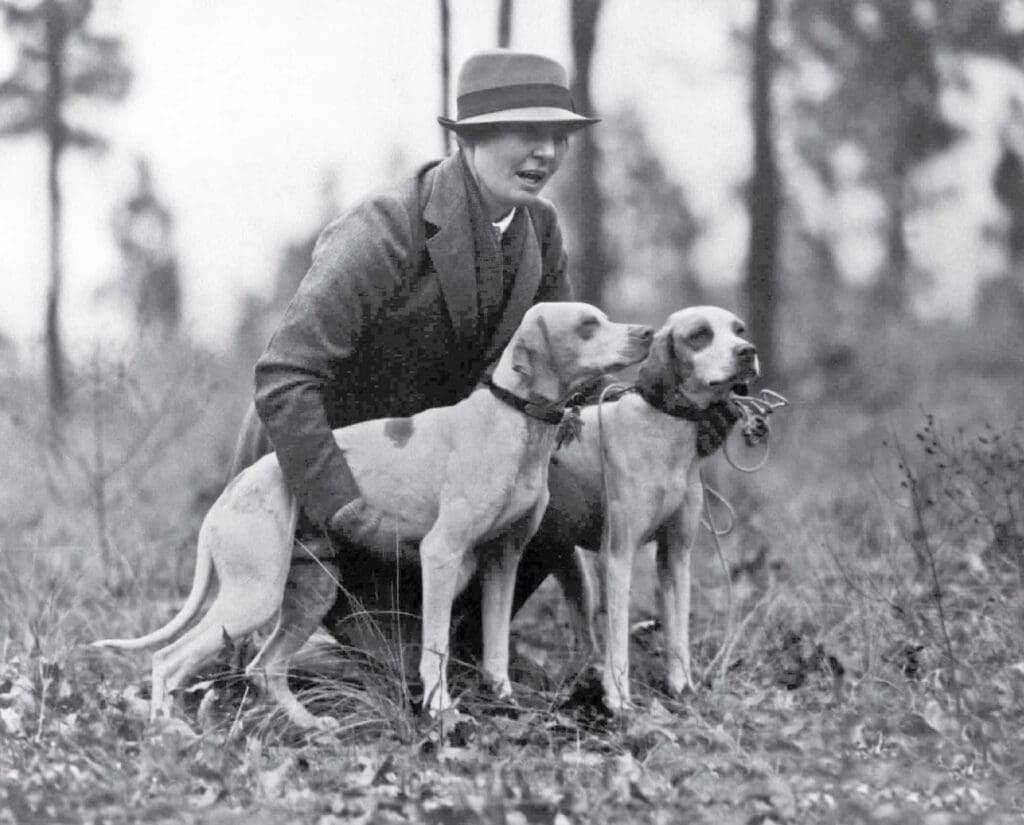
Claudia Phelps and Breeding in American Field
Claudia Phelps was born June 29, 1894 to a prominent American family. She grew up in the outdoor sporting world: fox hunting, deer hunting, quail and grouse hunting, and salmon and trout fishing in various locations where her family resided throughout the year. Her father purchased an estate in Aiken, South Carolina in 1900 where, years later, Claudia would set up her Rosstor Kennels for the importation and breeding of West Highland White Terriers. Being recognized as the country’s top breeder of Westies, she already had the right ideas about dogs, which she would eventually apply to the Pointers she bred and competed. “I try to develop real character in my dogs…I want my dogs to be affectionate, yet independent, confident, intelligent, and alert without being quarrelsome and foolishly noisy,” she said.
In 1929, Claudia sold her Westies, set up her Homerun Kennels, and began breeding and competing in field trials with her Pointers. She had dogs with two prominent professional handlers, Fred Bevan and Fred Arant—all three “Unforgettables” are described affectionately in Bill Allen’s wonderful book. Upon Claudia’s death on September 14, 1984 at the age of 90, Fred Arant wrote that she was called the “First Lady of Field Trials,” principally because of her many contributions to the sport. Her service merited her election to the Field Trial Hall of Fame in 1962. Over many years she was a prominent breeder of top-notch field trial contenders, most of them carrying the Homerun prefix. She often handled her own dogs in competition, especially at trials in the Southeast and at Pinehurst. Claudia Phelps was an excellent horsewoman, a fine field shot, a keen analyst of bird dog character, and a student of pedigrees which served her well as a successful breeder. From her Homerun Kennels came countless sparkling performers, champions, and Futurity winners that spanned the decades, including the 1960 National Open Pheasant Champion, Homerun Bess. Bess was bred to Arant’s Ch. Rambling Rebel Dan, with Claudia listed as breeder of record, to produce the great Hall of Fame performer, Ch. A Rambling Rebel who went on to head a lineage of winning field trial Pointers still prominent today.
READ: The Development of the American Pointer
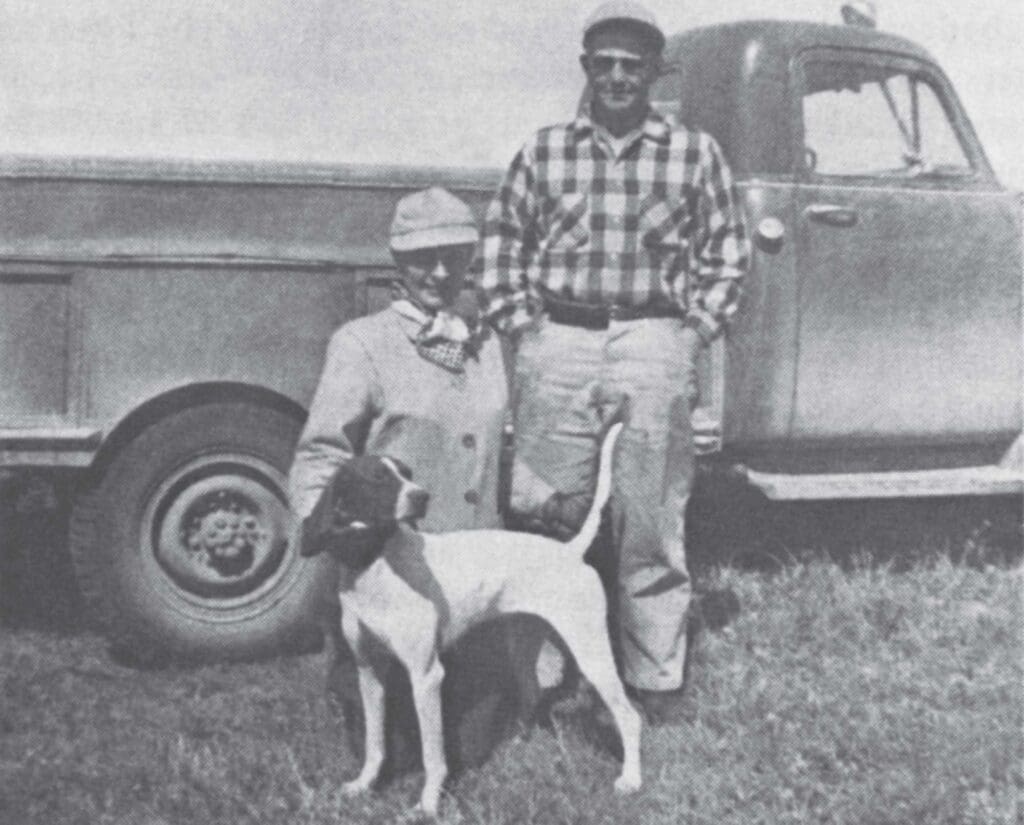
Mary C. Oliver and Her Legendary Dogs
Mary C. Oliver was born in Little Rock, Arkansas in the early 1920s. She was introduced to field trials through her husband, who was an avid quail hunter, but it was Mary who took the spotlight for her insightful breeding program and the legendary dogs that she produced. A great sportswoman, she got over her initial apprehension of horses and handled her own dogs in amateur field trials while campaigning others in the 1950s and 60s with professional handlers Jack Harper and Hoyle Eaton. She became a prominent breeder, initially through her prepotent matron Ranger Bows, who produced eighteen winners with 139 placements, including three celebrated champions: Jeff of Arkansas, Hattie of Arkansas, and The Arkansas Ranger (1957 National Derby Champion, 1958 National Championship winner, and 1977 Hall of Fame inductee). This all came at a time when the sport had far fewer field trials and championships than today, too.
Mary could easily recall the thrilling races of one of her all-time favorite dogs, Hattie of Arkansas. Hattie made her debut by winning the Derby in the chicken trials on the Canadian prairie in 1955. She went on to win plenty more and became a fine producer of ten winners. She was bred to three different sires, the most notable being 1960 National Championship winner Home Again Mike, which produced Home Again Hattie, winner of both the three-hour grueling National Free-For-All Championship in 1960 and the National Championship in 1962.
Mary Oliver’s name is associated with many other dogs of great prominence. She was instrumental in supporting field trials in Arkansas and the establishment of the grounds at Conway, which are still in use today. For her many contributions, she was inducted into the Field Trial Hall of Fame in 1975. Her nomination letters expressed the respect she garnered in a still very much male-dominated sport:
“Records live and opinions die. The records will show that Mary Oliver is by far the greatest breeder of field trial dogs who ever wore a skirt. She is also among the top five of the greatest breeders of class field trial dogs in any category since time began.”
“Her breeding program has been the envy of many, for she just keeps turning out more great champions, and her contributions to the sport are legendary. She has been and still is patron, club official, and benefactor of the All-Age major circuit. She has always been a fierce competitor, but a good loser as well as a winner that asks no quarter.”
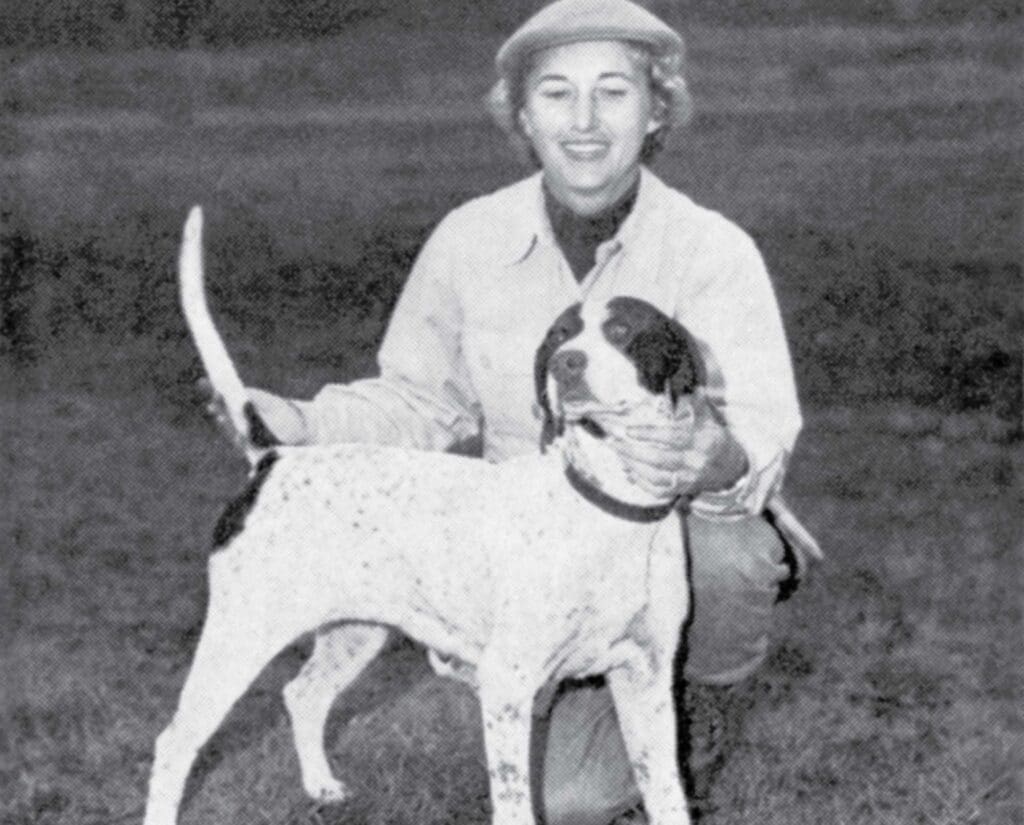
Matilda Nitchman a Masterful Dog Handler
Matilda Nitchman, born in 1914, was married to one of the country’s most successful amateur competitors of his time, Alvin Nitchman. Their son, Alan, fondly recalls, “Mom and Dad were a team in the field trial game. Mom was a full-time participant in the selection of pups and training of the dogs as well as an accomplished and recognized scout and handler. There is no doubt in my mind that Mom’s interest, dedication and hard work was a key to their success. While Dad was at his dental practice, Mom kept the dogs and horses conditioned and sharp in their training. I recall many times Dad would instruct Mom to roadwork dogs to get them ready for upcoming trials. He did not have the time to leave his practice to assist her. Rain or shine, hot or cold, Mom would go to the barn, brush her horse, saddle up, and get at least two dogs out and put them in the harnesses. It was not an easy send off as our home in Cranbury, N.J. backed up to the school ground, which meant Mom had to lead the animals out through the back gate before she could mount and go. No one was there to hold the horse or the dogs so they really had to know what ‘whoa’ meant. As well as participating in the training, Mom was a wonderful scout who, on numerous occasions, found dogs on point. If dogs went astray, she knew how to bring them back to the front so they appeared to have made a beautiful cast. And, of course, Mom successfully handled dogs—Sue in particular—in trials and won.”
Sue was Ch. Potato Patch Sue. Though she ultimately became Alvin’s dog, it was Matilda who recognized the special talent this dog had which resulted in 25 wins, including five championships and 11 first place wins. Matilda had faith in the little female who was originally slated to be sold, discovering that she had unusual game-finding abilities and concluding that perhaps she was the best of all the Nitchman dogs when it came to pheasant work. It was Matilda who piloted Sue to both her 1961 and 1962 National Amateur Pheasant Shooting Dog Championship wins. Sue would become the dam of Ch. Smart who sired Ch. Pork Roll and Ch. Guard Rail, all three of which are in the Field Trial Hall of Fame.
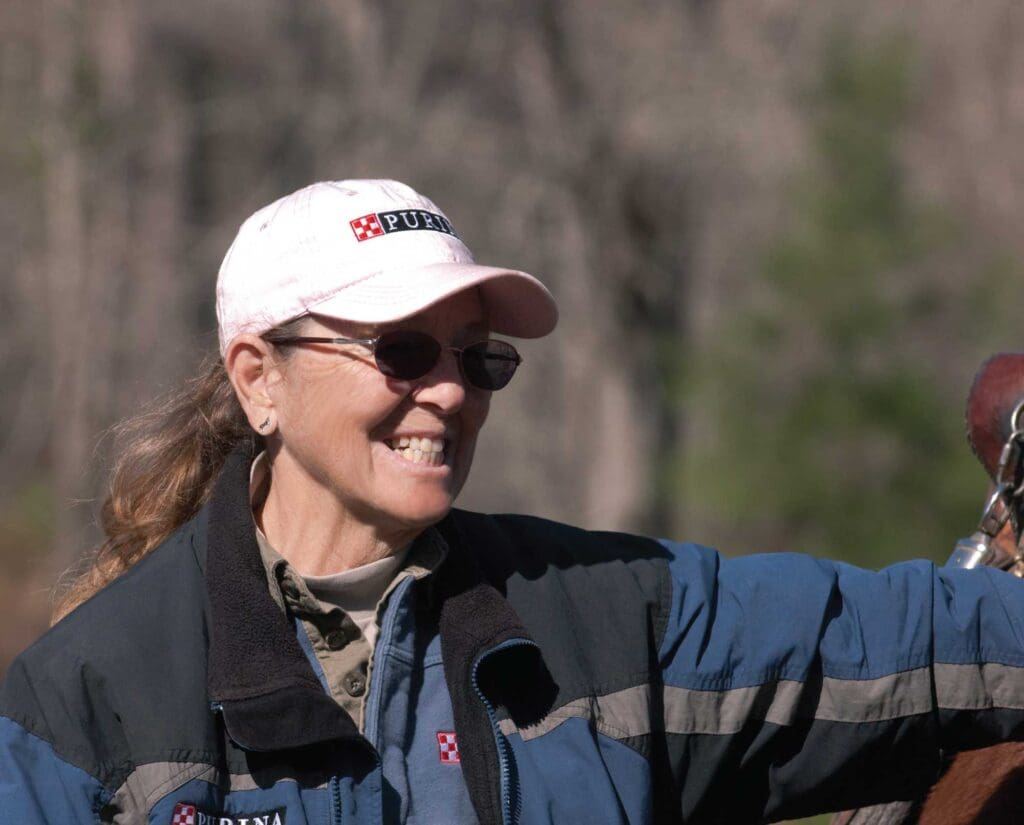
Sherry Ebert and Over 60 Championships
As a young horse trainer, Sherry Ebert entered the world of pointing dogs in 1962 when she married Harold Ray at the age of 17. Together, they began working dogs with trainer Fred Bevan. Within two years they were hired by Elwin and Inez Smith, thus beginning a relationship that endured for 32 years and resulted in 25 champions that won over 60 championships. These included Smith setters and Hall of Fame dogs Ch. Tomoka, Ch. The Performer, Ch. Destinare, and the pointer Ch. Bonafide; as well as National Shooting Dog Champions Ch. Tomoka and Ch. Righteous Dan. In addition to expertly scouting these dogs to their wins, Sherry was a critical piece of their development. Sherry raised the puppies born at the Smith’s Waynesboro, Georgia farm, often sleeping in the kennel house awaiting the arrival of a litter. Early on, she recognized the importance of handling young pups in order for them to rise to the championship level.
In the early prairie trials that Sherry attended, she rode every brace to watch and learn from the best, including John S. Gates, Fred Arant, Herman Smith, and Bud Daugherty. This dedicated approach to her new profession didn’t go unnoticed. As noted by field trial reporter and writer Everett Skehan, “Sherry Ray is a fierce competitor, rated by many professionals as one of the most talented and productive scouts in the country and an excellent trainer in her own right.”
Sherry earned her reputation through tenacity and dedication, but she was also known as someone who would help if you needed her and give her all when she did. In 1989, Sherry won the 75-dog Eastern Open Shooting Dog Championship with The Performer, making her the first woman to win an open championship competing against all professional handlers.
In 1995, Sherry began training dogs for the public. She has had her hand in the development of countless champions—both American Field as well as many pointing breeds in AKC, including national champions. She is also a highly sought-after judge. With nearly 60 years of experience, Sherry has dedicated much of her life to field trials, the development of field trial bird dogs, and sharing her vast knowledge and experience with others, particularly encouraging and helping other women.
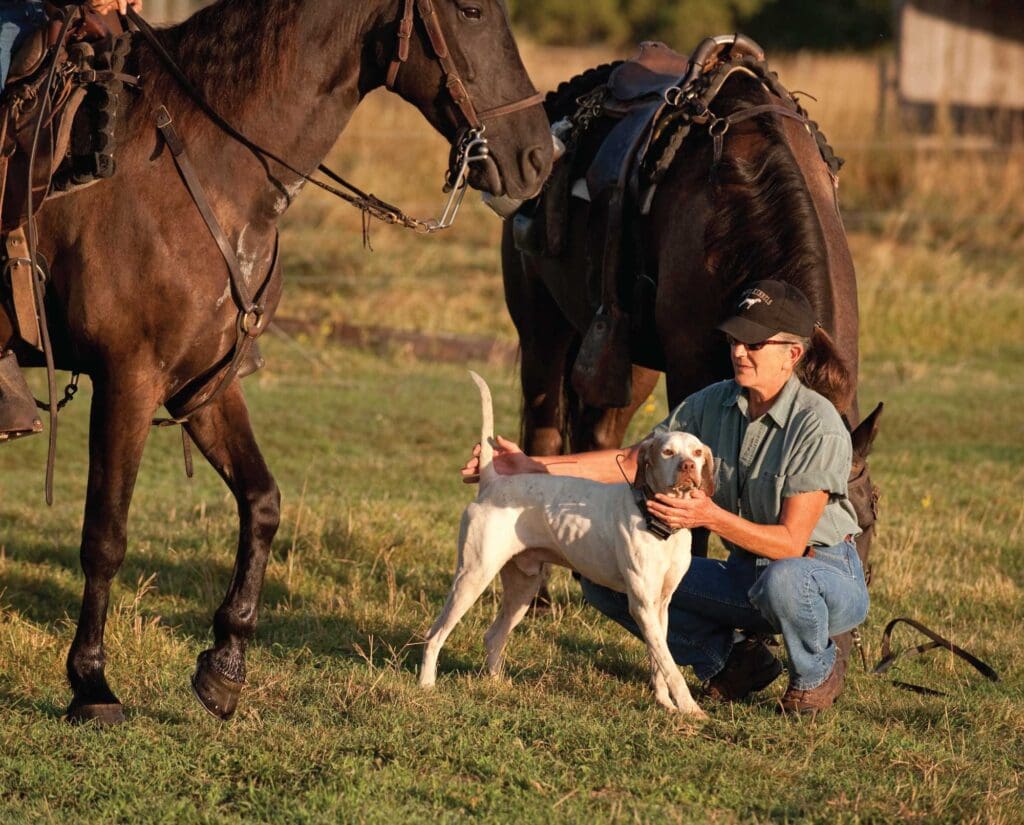
Mazie Davis and Reporting for American Field
Mazie Davis’ contributions to the field trial sport are vast. An excellent horsewoman, she began her lifelong involvement with bird dogs by scouting for her husband, professional All-Age trainer and handler Colvin Davis (Hall of Fame, 2006) in the early 1980s. In All-Age competition, the scout is an integral part of the team along with the handler and dog. Instructions from Colvin were minimal: “Turn the dog loose, don’t lose him, find him when he points, and don’t get hurt.”
On Sherry Ebert, Mazie wrote, “Early in 1973, I attended my first field trial in a scouting capacity for Colvin who was, at the time, competing with shooting dogs. I met Sherry there for the first time as we rode side-by-side scouting. I was nervous, of course, and she could tell. I will always recall her looking me square in the eye and saying, ‘You sit a horse well. You can do this—just believe in yourself.’”
Mazie was soon persuaded to report her first field trial and went on to become an official reporter for the American Field by penning her unique, insightful descriptions of the performances of dogs competing in the country’s preeminent trials and championships. Mazie partnered with Colvin in running their training and kennel operation in Alabama as well as annual trips to the Manitoba prairies where they hosted the oldest Canadian prairie championship, the Manitoba Championship, as well as the Broomhill trials. Mazie has trained dogs, successfully run many of the younger ones in puppy and derby stakes, judged, marshaled, and done about everything that hosting successful field trials requires.
In 2008, Mazie and I collaborated on the creation of Strideaway, an online publication dedicated to American Field trials and pointing dogs with the mission of sharing stories and advice from knowledgeable trainers, handlers, breeders, and other experienced enthusiasts. On Strideaway’s launch, Mazie explained, “We’re trying to take care of the sport as it was passed down to us and hope to pass it on to the next generation. I’m astonished every time I get on a horse and watch the show. The animals are amazing with the pure heart and grit they show! They’ll give you their last breath! We want people to be familiar with what great athletes the dogs are, to remember the people who left the sport to us, and why they were so passionate about it. We want to connect the forebearers of field trials to today’s and the next generation of trialers to keep the sport going.”
Chris Mathan is an outdoor photographer, graphic/website designer, marketing specialist, and publisher working exclusively in the world of upland bird dogs and field trials. In 2008, along with partner Mazie Davis, she launched the online publication Strideaway presenting unique content of interest to bird dog field trialers and enthusiasts. Chris has been photographing bird dogs and field trials for the past 16 years, taking her from the grouse woods of the northern states to Texas, Idaho, the prairies and the piney woods of the south. She is an avid upland bird hunter, amateur dog trainer/field trailer, and a staunch conservationist. She lives in the heart of quail plantation country of South Georgia with her three pointers.




Miss Leslie Anderson.
This is meant to be a 4-part story as it is obviously impossible to cover the many women, who in a so many different ways contributed to field trials. And yes, including the beloved AFTCA secretary-treasurer Miss Leslie Anderson, fondly known simply as “Miss Leslie”. https://www.aftca.org/about-aftca/history/
I am proud to have judged the Miss Leslie Open Derby Classic when it was still held, in conjunction with the International Amateur Woodcock Championship, in Debec, New Brunswick. Miss Leslie and Linda Hunt who followed as AFTCA Secretary in 1990 were fixtures at those two popular and well-loved field trials.